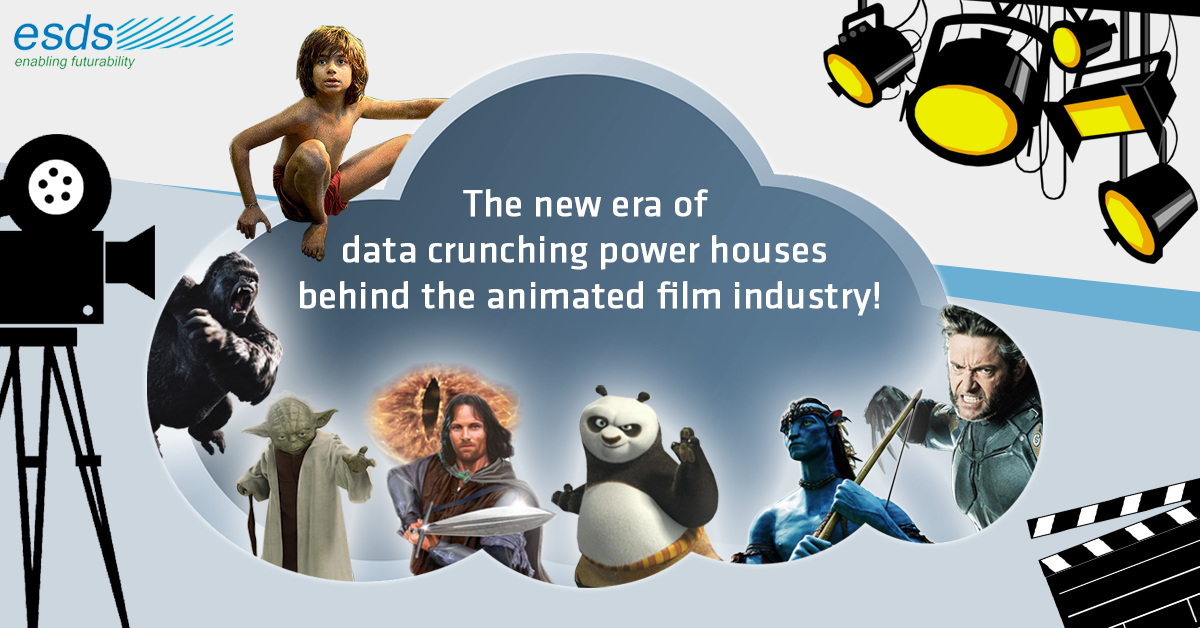The New Era of Data Crunching Power Houses, Behind The Animated Film Industry !

Behind The Animated Film Industry
Film animation technology has come a long way since the early years of hand-drawn cartoons. The techniques used by animators to bring characters to life have improved dramatically over the years. Unlike traditional animation, which created the illusion of movement through frame-by-frame manipulation of illustrations, most animators and studios today use high end computers to generate three-dimensional images.
While computers have assisted animators in their efforts for decades, the introduction of computer animation was a turning point for animation studios. Until then, all of their animation used to carried out on workstations (powerful desktop), but computer-generated images create such large amounts of data that animation companies now have to build their own Datacenters to handle this load.
The global multi-billion dollar animation industry these days is dependent on 3D animated film projects that are full of textures, colors, photo realistic expression and movement.
Today, almost all films are shot at 24 frames per second, which equates to approximately 130,000 frames over a 90 minute film. In computer animation, each frame has many assets, and every character has thousands of control points. So entire film can consist of up to 500 million digital files. As a result, some animation studios have had to start outsourcing some of their data processing to even larger datacenters and rendering farms.
These big datacenters contain hundreds of powerful servers, which provide vast amounts of processing power, virtual machines to store data enabling CG animation studios to work with large, complex data sets and intricate 3D models.
While animation companies may not do all of their rendering in this ‘cloud‘, there are many times of year when the demand for processing power exceeds the capacity in their own data centers – especially if they are working on several animated films at one time.
Examples of animated projects:
A single Dream Works film, like How to Train Your Dragon 2, requires as many as 10,000 real time computing cores, and 75 million computing hours, to render all the images. It also requires 250 TB of disk space to store any film.One movie is half a billion files, resulting in 250 billion pixels on screen. In order to support this, Dream Works has 20,000 computing cores in servers across three datacenters around the world.
Lucas Film has produced some of the most memorable and breathe taking visual effects in the history of films. Rendering the special effects for Star Wars and the Terminator and Indiana Jones series requires serious high-performance computing.
It takes a lot of data center power, servers and virtual machines to create the stunning visual effects behind blockbuster movies such as King Kong, X-Men, the Lord of the Rings and most recently Avatar fast and furious, Jungle book.
Future of animation industry:
In coming time, the amount of data generated during the creation, distribution of animated films is only going to increase Films will slowly move from HD to 4K resolution, resulting in a multiplication of the amount of capacity needed for storage.
Another aspect of the animation industry that will benefit from Cloud Computing is startup and small studios. With the cloud’s pay as you go and pay per use models, new animation studios don’t have to invest huge amount in render farms and workstations. Lucas film is planning that the next generation of Star Wars films will use 48 frames a second rather than 24, signaling a new era for the film industry. As these numbers increase, studios will depend more and more heavily on faster processors and cloud computing.
Source : www.cloudtimes.org, www.thetelegraph.co.uk
- Small Business Website: Building a Strong Online Presence - March 11, 2025
- Top 10 Best Practices for Implementing DRaaS in 2025 - January 20, 2025
- Signs of Cyber Attack and How to Respond to them? - March 25, 2019